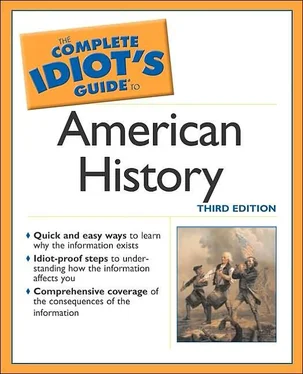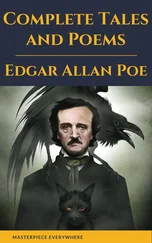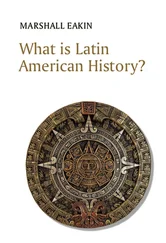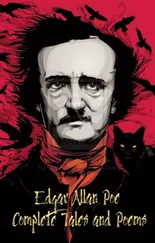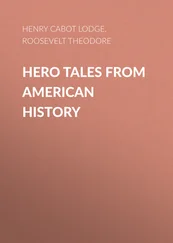Nobody knows for certain just where Vinland was. Some have suggested a location as far south as the Virginia Capes, although most historians believe that it was in Newfoundland, perhaps at a place called L’Anse aux Meadows on the northernmost tip of the Canadian province.
After Leif the Lucky left Vinland, his brother Thorvald paid a visit to the tenuous settlement about 1004. Next, in 1010, Thorfinn Karlsefni, another Icelandic explorer, attempted to establish a more permanent settlement at Vinland. According to two Icelandic sagas, Thorfinn, a trader as bold as he was wealthy, brought women as well as men with him. They carried on a lively trade, but they also fought fiercely with the Native Americans, whom the sagas call Skraelings—an Old Norse word signifying “dwarfs” or “wretches” or, perhaps, “savages.” The Skraelings attacked tenaciously and repeatedly.
After three lethal winters, Thorfinn and his would-be settlers abandoned Vinland forever. The Viking expeditions to North America led, then, to nothing—at least not right away. Christopher Columbus, half a millennium removed from the Vikings, heard of the Vinland tradition and was excited by stories about a New World across the “Ocean Sea.”
The Least You Heed to Know
Native Americans almost certainly immigrated to the Americas from Asia across an Ice Age “land bridge” where the Bering Strait now is.
Pre-Columbian Native American cultures varied widely, with the most elaborately developed living in South and Central America.
The European discoverer of America was (most likely) Leif Eriksson about 1000.
Eleven million is the current consensus. However, estimates of the prehistoric population of the area encompassed by the United States range wildly—from 8.4 million to 112 million. For comparison, in 1990, 1,959,234 Indians, including Eskimos and Aleuts, lived in the United States.
Native American is the term used by most historians and anthropologists to describe the aboriginal peoples of the Western Hemisphere. In this book I also use the more familiar term “ Indian .” That designation was coined by Christopher Columbus, who, on October 12, 1492, thought that he had landed in Asia—”the Indies”—and therefore called the people he encountered Indians. The name stuck.
Tikal, in northeastern Guatemala, was the largest Maya city of the Classic era. Its population probably numbered 75,000, and it covered about 40 square miles.
The adventures of Leif Eriksson (ca. 970-1020) are known exclusively through semilegendary, sometimes contradictory sagas. Leif the Lucky (as he was called) was the son of Eric Thorvaldsson, better known as Eric the Red, who established in Greenland the first enduring European settlement in the New World about 985. Through his fearsome father (Eric was banished from Iceland after having murdered a man), Leif Eriksson was descended from a line of Viking chieftains. Leif explored the lands that had been first sighted by Bjarne Herjulfsson.
Columbus Days
(1451-1507)
In This Chapter
The round earth hypothesis
Columbus’s early life and struggle for a sponsor
The voyages of Columbus
Contact—and clash—with Nature Americans
The voyages of Amerigo Vespucci and the naming of America
Wow. Columbus. This is an old story. You’ve heard it more often than the story of Adam and Eve, more often than the tale of how your Aunt Agnes once met Spiro T. Agnew, and more often than you’ve watched Ed Norton and Ralph Kramden try to teach each other how to play golf on the umpteenth Honeymooners festival of reruns.
It’s so old, so tightly tied up with all the other half-learned rote lessons of childhood, that we forget to imagine the combination of creativity, the capacity for wonder, the courage, and the sheer madness that sent a Genoese seafarer and crew in three small ships across an unknown expanse of ocean to (it turns out) they knew not where.
It’s a Round World After All
But first there’s that business about the roundness of the world. Generations of schoolchildren have been taught that, when Columbus sailed, he was about the only person in the world advanced enough to believe that the earth is round. His task (we were told) was to convince King Ferdinand and Queen Isabella of Spain to finance an expedition to sail west in order to reach the East. And that, of course, was predicated on the assumption that the world is a globe.
In fact, the idea of a round earth was hardly new by the end of the 15th century. Ancient Greeks such as Pythagoras and Aristotle said the earth was a sphere, and, in the 3rd century B.C.., Eratosthenes of Cyrene (ca. 276-195 B.C.) performed a remarkable measurement that determined the earth’s circumference with great accuracy.
But Columbus was hardly alone in differing from the conservative view, which, by the late 1400s, was downright unfashionable among the enlightened and educated. Not that Cristoforo Colombo—to use the native Italian form of his name—was well educated. He had been born in Genoa in 1451 to a weaver and would not learn to read and write until he reached adulthood. As a youth, he took to the sea. In 1476, shipwrecked off Portugal, he went to Lisbon, then sailed as far as Ireland and England and even claimed to have sailed from England to Iceland (where, perhaps, he heard stories of an ancient place called Vinland, across the “Ocean Sea”). Columbus returned to Genoa in 1479, then went back to Portugal, where he married. His wife died while giving birth to their child Diego the following year. But, by this time, the seafarer’s thoughts were far from his family.
Having learned to read, he devoured shadowy accounts of westward voyages. He decided that the world was indeed round. And he was right about that. What he was wrong about was believing Marco Polo’s calculations concerning the location of Japan—1,500 miles east of China—and the work of the Greek astronomer Ptolemy (A.D. ca. 100-70), who grossly underestimated the circumference of the earth and overestimated the size of the Eurasian land mass. Further encouraged by the miscalculations of the Florentine cosmographer Paolo dal Pozzo Toscanelli, Columbus concluded that Japan (which Columbus called Cipangu) was a 3,000-mile voyage west of Portugal, over an ocean covering a round earth. Now, that was a long trip, but it was one that (Columbus believed) could be made by the vessels of the day.
In 1484, Columbus secured an audience with King John II of Portugal and tried to persuade him to back a voyage to Japan. Now, there were excellent reasons for going to the East—all of which involved lucrative trading opportunities, chief among which was the commerce in spices. In the time of Columbus, aromatic spices were not just pleasant condiments. They were rare and precious substances essential to the preservation of food in an age long before refrigeration was invented. Spice was as highly valued as gold. But King John 11 turned Columbus down just the same, believing that even a trip of three thousand miles was beyond the capabilities of existing ships.
Undaunted, the seafarer approached Don Enrique de Guzman, Duke of Medina Sidonia, only to be rebuffed. He next asked Don Luis de la Cerda, Count of Medina Celi, who was sufficiently intrigued to arrange an audience, on or about May 1, 1486, with Queen Isabella I of Castile. For the next half-dozen years, Columbus, his son Diego in tow, cooled his heels in the Spanish court of Isabella and her husband, Ferdinand II of Aragon. During this time, he made many influential friends and enemies. Among the most powerful of the former was a courtier named Luis de Santangel, who, after the monarchs apparently turned down Columbus once and for all early in 1492, actually persuaded the pair to sponsor the voyage, which was financed by a combination of royal money and private funds. Commissioned “Admiral of the Ocean Sea,” as well as viceroy and governor of whatever lands he might discover, Columbus set sail from Palos on August 3, 1492. He was in command of three small ships, the Nina (skippered by Vincente Yanez Pinzon), the Pinta (under Vincente’s brother, Martin Alonso Pinzon), and his own flagship, the Santa Maria.
Читать дальше
